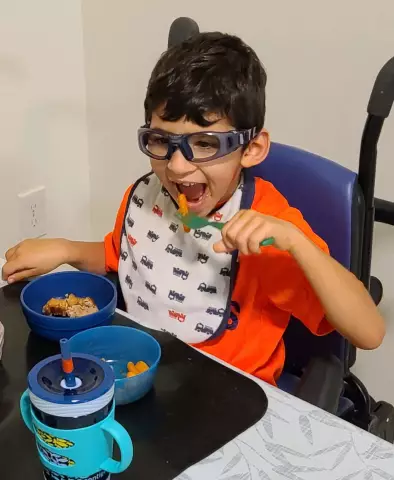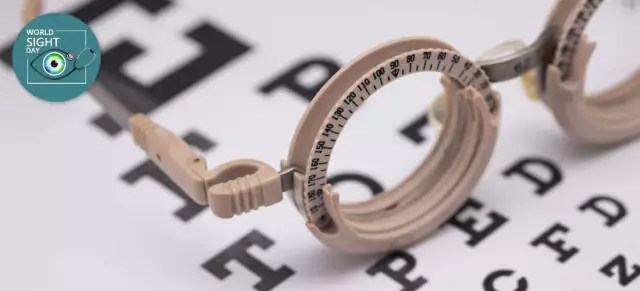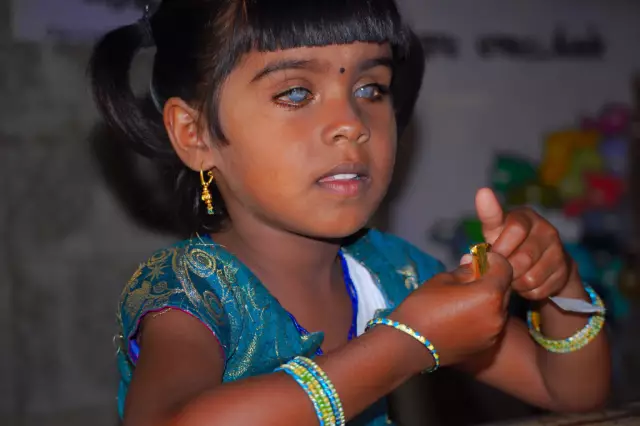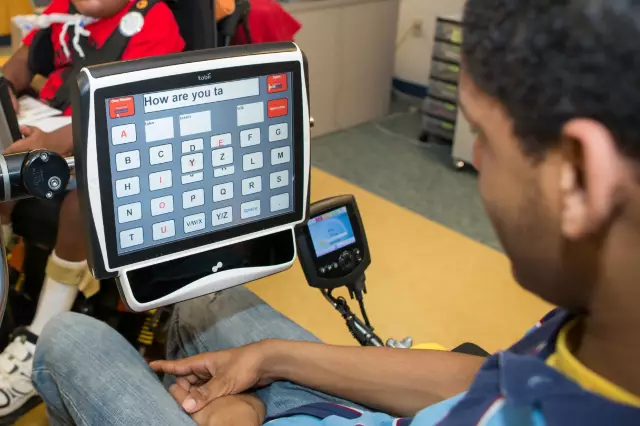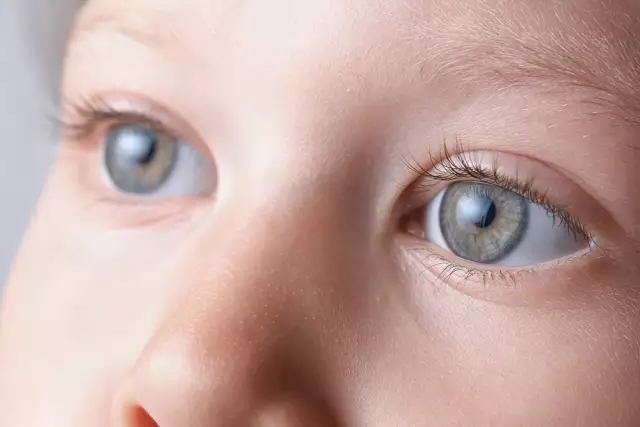- Author Rachel Wainwright [email protected].
- Public 2023-12-15 07:39.
- Last modified 2025-11-02 20:14.
Children with visual impairment
Children with visual acuity problems have developmental disabilities and require a different approach to learning than those who see well. First of all, this is manifested by the compensatory development of other senses that allow us to know the world - touch, hearing. Depending on the degree of visual impairment, the methods of communicating knowledge to them will differ.
Types of visual impairment
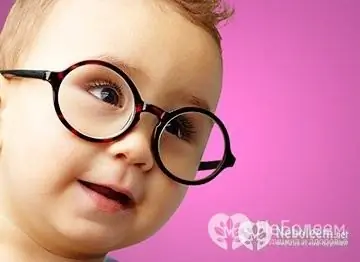
Visual impairment in a child can be functional or organic. The former are characterized by transient changes that can be corrected or can go away on their own (for example, strabismus, myopia, hyperopia, astigmatism, etc.). Organic lesions are based on morphological changes in the structure of the eye or other parts of the visual analyzer (optic nerves, pathways, etc.).
Often, with organic visual impairments, concomitant lesions of the nervous system or congenital malformations - cerebral palsy, hearing impairment, mental retardation, etc.
For the reason that caused visual impairment, they are classified into:
- Congenital - if the damaging factor acted during the period of intrauterine development of the fetus (more often infections and metabolic disorders);
- Hereditary - when an eye disease is passed from generation to generation (for example, color blindness, cataracts, glaucoma, etc.);
- Acquired - if the reason was active after the birth of the child (infections, injuries, etc.).
According to the degree of decrease in visual acuity, children are divided into visually impaired, with residual vision or totally blind.
Development features of children with visual impairments
Thanks to sight, a person receives up to 90% of information about the world around him. Therefore, when this sense organ falls out, the information to the child mainly comes through hearing and touch. A feature of children with visual impairments is that they form slightly different ideas about the world around them than those who can see, since other sensory images are formed. In raising such children, regular attention to all types of audible sounds plays an important role.
A decrease in visual acuity, in addition to limiting the knowledge of the world around the child, somewhat slows down the development of speech, attention and memory. Blind children may misunderstand words, as they poorly correlate them with real objects that these words mean.
Physical activity plays a huge role in the development of children with visual impairment. When educating, it is especially important to devote more time to outdoor games and entertainment, as they develop coordination and the ability to correctly navigate in space, muscular feeling, teach important skills or even stimulate vision. It is important to take into account the recommendations of the ophthalmologist and the specific diagnosis when forming options for the motor activity of young children. This is necessary in order to prevent negative consequences with incorrectly selected loads.
Another feature of children with visual impairments is that teaching specific skills and actions requires repeated repetition of them “hand in hand”. Moreover, this must be repeated until the action is brought to automatism.
It is necessary to select toys for small children with poor eyesight large, bright, with a textured surface (stimulates the development of touch and residual vision), they are especially interested in musical toys and those that emit certain sounds.
In a family, a visually impaired child should be involved in the implementation of intrafamily responsibilities and fulfill them as far as possible. There is no need to limit his contacts with normal-seeing children.
Psychophysical characteristics of children with visual impairment
In the development of a blind preschooler, 3 general patterns can be distinguished:
- Such a child lags somewhat behind in physical and mental development in comparison with a sighted peer, since his activity in relation to mastering the world around him is lower;
- The developmental periods of a blind child do not coincide with those of the sighted. This happens until other senses develop mechanisms to compensate for the lack of normal vision;
- The development of a blind child is characterized by disproportionality - some aspects of the personality develop faster (speech, thinking), while others - more slowly (mastery of space, movement).
An important characteristic of children with visual impairments is that blind preschoolers are clumsy and not confident enough due to insufficient development of movement coordination. So, with congenital blindness, the lag in the formation of the walking skill can be 2-3 years. The impulsiveness of preschoolers is at the same level as that of the sighted, but due to the lack of sufficient coordination, impulsivity is manifested sharper and brighter.
Prevention of visual impairment in children

To preserve good vision for a long time, it is necessary to prevent its disorders in children. This should be done from the first months of a baby's life. So, a healthy child should make the first visit to an ophthalmologist with his mother at the age of 1 month. The doctor will diagnose possible congenital problems with the organ of vision and give recommendations for the prevention of visual impairment in children. At the age of 2-3 years, you can already check visual acuity using special tables. Early diagnosis will avoid many problems with schooling in the future.
Education of children with visual impairments should take into account the recommendations of the ophthalmologist. Children who are completely blind can attend specialized kindergartens and boarding schools for the blind and visually impaired. It is possible to receive secondary education at home. With residual vision, children with impairments can be trained using special equipment and aids.
If a child can read, he must follow the rules of reading hygiene - do not read lying down, take breaks for about 3-5 minutes, doing special exercises for the eyes. Also, doctors recommend limiting TV viewing and computer time for games.
YouTube video related to the article:
Found a mistake in the text? Select it and press Ctrl + Enter.

